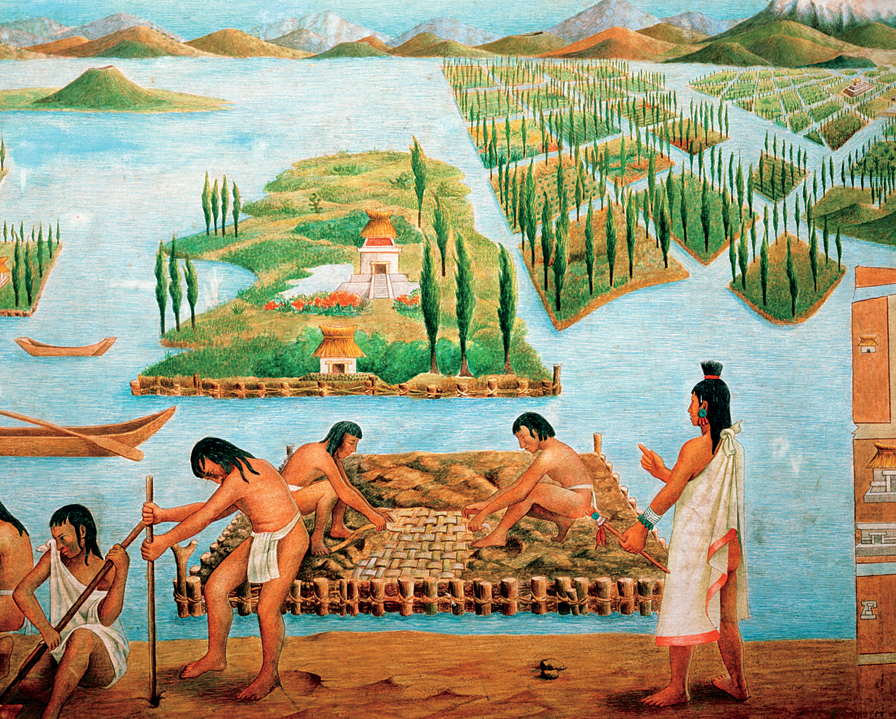A History of World Societies:
Printed Page 315
A History of World Societies Value
Edition: Printed Page 313
The Mexica: From Vassals to Masters
In the early fourteenth century, the Mexica, a migrant, seminomadic group, arrived in the crowded and highly cultured Valley of Mexico. They found an environment that, since the collapse of the Toltec Empire in the twelfth century, had divided into small, fragile alliances that battled to claim the legacy of the Toltecs. At the moment of their arrival, control over much of the valley lay in the hands of the Tepanec Alliance. The Mexica negotiated the right to settle on a swampy island on Lake Texcoco in exchange for military service to the Tepanecs.
Residents of the city-
At its peak, the chinampa farming system formed vast areas of tidy rectangular plots divided by canals that allowed for canoe transportation of people and crops. When the Spanish entered Tenochtitlan (which they called Mexico City) in November 1519, they could not believe their eyes. The Aztec city, built in 1325, impressed them greatly. Bernal Díaz del Castillo, one of Cortés’s companions, reported:
When we saw all those cities and villages built in the water, and other great towns on dry land, and that straight and level causeway leading to Mexico, we were astounded. These great towns and cues (temples) and buildings rising from the water, all made of stone, seemed like an enchanted vision. . . . Indeed, some of our soldiers asked whether it was not all a dream.7

Over time, the Mexica improved their standing in the Valley of Mexico by asking a powerful neighboring city-
By the end of Acamapichtli’s reign (1372–
Anthropologist Ross Hassig described the manner in which Mexica ruler Itzcoatl (r. 1427–
To consolidate the new political order, Tlatoani Itzcoatl, guided by his nephew Tlacaelel, burned his predecessors’ books and drafted a new history. Tlacaelel advised his tlatoani: “It is not necessary for all the common people to know of the writings: government will be defamed, and this will only spread sorcery in the lands; for they contained many falsehoods.”9
The new history placed the warrior cult and its religious pantheon at the center of Mexica history, making the god of war, Huitzilopochtli, the patron deity of the empire. Huitzilopochtli, “Hummingbird of the South,” was a god unique to the Mexica who, according to the new official origin stories of the Mexica people, had ordered them to march south until they found an island where he gave them the sign of an eagle eating a serpent, which appeared to them in Tenochtitlan. (See “Individuals in Society: Tlacaelel.”)
Under the new imperial order, government offices combined military, religious, and political functions. Eventually, tlatoanis formalized these functions into distinct noble and common classes. This gave soldiers opportunities for social advancement. After securing five sacrificial victims in battle, a commoner soldier entered the lower nobility, which freed him from paying tribute. He could show his new status by publicly wearing feathers and flowers. The Valley of Mexico had sustained itself through chinampa agriculture, but as the empire grew, crops provided as tribute from distant conquered peoples increasingly fed the valley’s rapidly growing population. The Mexica sustained themselves through military conquest, imposing their rule over a vast part of modern Mexico.